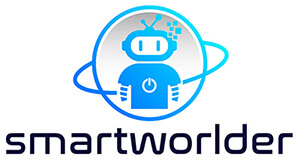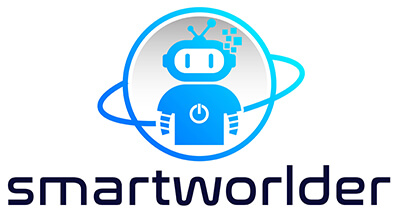Smart Grids Explained
Content
– The Changing Model of Electrification
– Smart Grid Definition
– Why do we need Smart Grids?
– Components of a Smart Grid
– Smart Grid Research and Investments
The digital revolution that is taking place across the economy (see for instance our articles on smart factories or smart cities) is also impacting the electricity sector. Governments, utilities and manufacturers increasingly are embracing digital technologies, from deploying hardware assets such as smart meters, digital substations and smart electric vehicle (EV) charging infrastructure to using software solutions such as artificial intelligence, digital twins, dynamic line rating and blockchain technology.
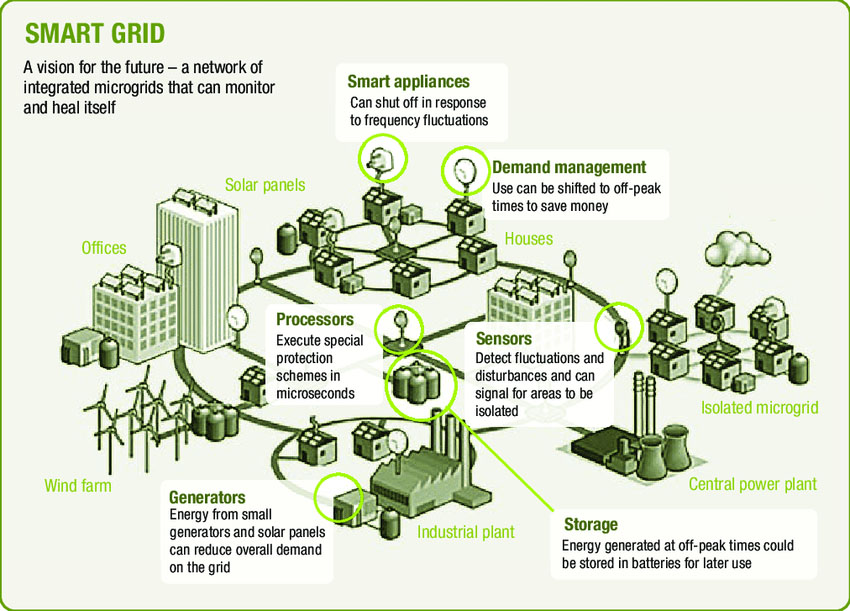
The Changing Model of Electrification
A country’s traditional model of electrification, where the electricity grid consisting of a limited number of power stations injects electricity into the grid and millions of customers draw electricity from the grid is undergoing significant changes. Some of these changes are due to:
Some of the benefits of a modernized electricity network include the ability to reduce power consumption at the consumer side during peak hours, called demand-side management; enabling grid connection of distributed generation power (with photovoltaic arrays, small wind turbines, micro hydro, or even combined heat power generators in buildings); incorporating grid energy storage for distributed generation load balancing; and eliminating failures such as widespread power grid cascading failures.
Smart Grid Definition
A smart grid – also referred to as smart electric grid or smart power grid – is an umbrella term that covers modernization of both the transmission and distribution grids. The concept of a smart grid is that of a ‘digital upgrade’ of distribution and long-distance transmission grids to both optimize current operations by reducing the losses, as well as open up new markets for alternative energy production.
The International Energy Agency (IEA) defines smart grids as follows: “A smart grid is an electricity network that uses digital and other advanced technologies to monitor and manage the transport of electricity from all generation sources to meet the varying electricity demands of end-users. Smart grids coordinate the needs and capabilities of all generators, grid operators, end-users, and electricity market stakeholders to operate all parts of the system as efficiently as possible, minimizing costs and environmental impacts while maximizing system reliability, resilience, and stability”.
Setting up and running smart grids requires multiple engineering disciplines to deal with the required power systems, information communication technologies & infrastructure, systems of hardware and software technology, equipment, instrumentation, big data, control, etc.
Although smart energy systems incorporate a series of other energy integration technologies such as energy storage and demand response systems, these are – despite being directly connected to smart grids – independent from them.
Why do we need Smart Grids?
By intelligently integrating the actions of all electricity generators and users connected to it, a smart grid increases the efficiency of electricity supplies. It is doing so by employing innovative products and services together with intelligent monitoring, control, communication, and self-healing technologies to:
The increased efficiency and reliability of the smart grid is expected to save consumers money and help reduce CO2 emissions. Governments increasingly focus on energy security, investing in the Smart Grid could be used to reduce dependence on non-domestic energy sources. It could also make the grid more resistant to military or terrorist attacks, by physical or digital means.
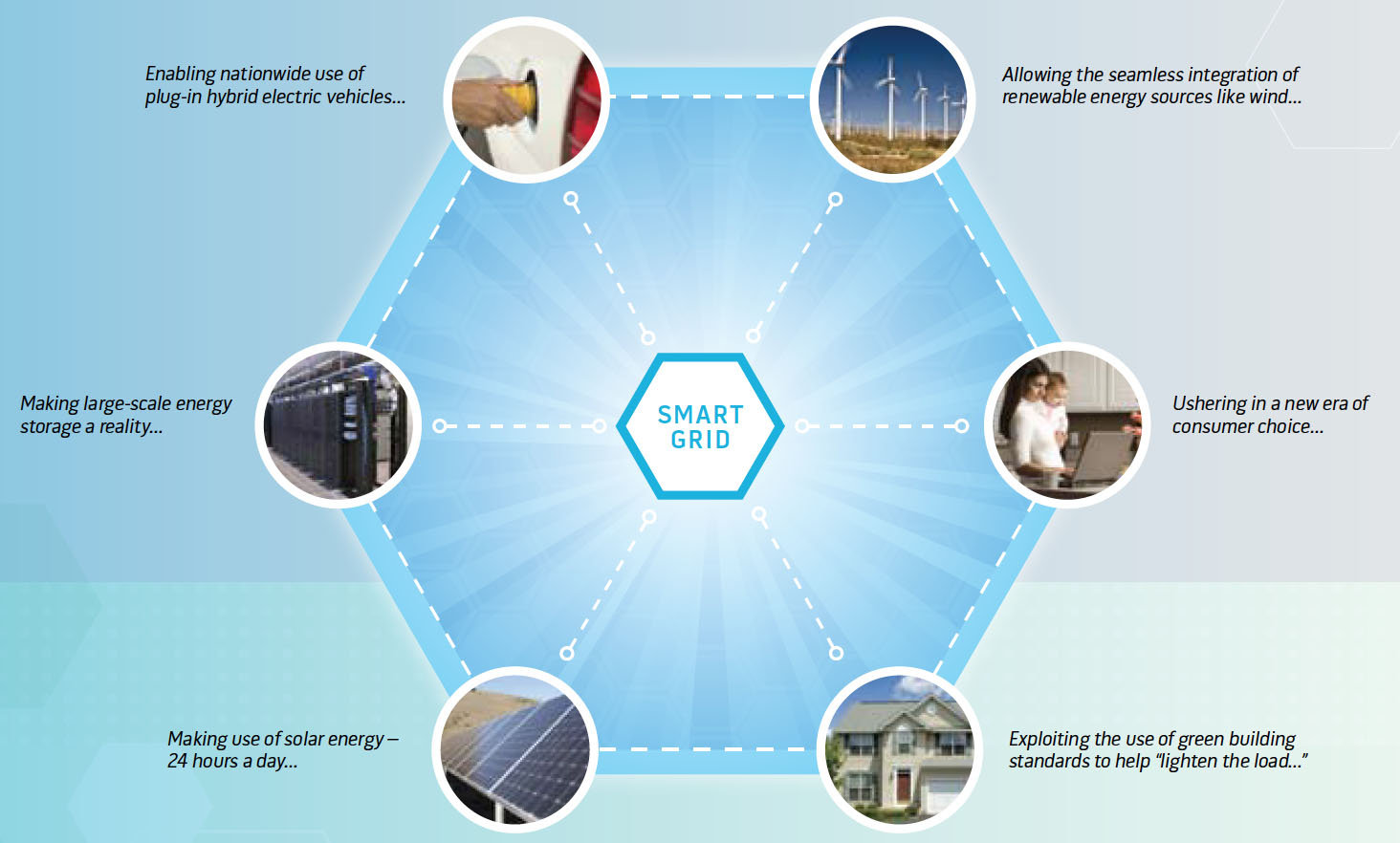
Components of a Smart Grid
Smart grid components include the devices, sensors, and control applications (including computers, programs, databases, people, and operational support) that are required to manage the entire grid network.
On the demand side, residential and commercial buildings as well as industrial users require basic functions of lighting, temperature control, power for equipment operation, and energy management systems (EMS). The EMS is a core application providing the capability for metering and integration with building management systems as well as remote load control, monitoring and control of distributed generation, and auditing/logging for system troubleshooting and security purposes.
The operation domain consists of the applications for distributed network operation, including the Supervisory Control and Data Acquisition (SCADA) systems to monitor and control the status of devices in bulk generation, transmission, and distribution domains. This area also includes the applications for general operations, including the asset management and meter data management (i.e., energy usage, energy generation, meter logs, and meter test results) to make energy data available to authorized parties.
The grid’s service providers manage applications related to customer and account management and installation management. Customer management is to manage billing/ account management and the overall customer relationship by providing point-of-contact and resolution for customer issues and problems. Service providers install and maintain the premises equipment that interacts with the smart grid. In particular, building management is to monitor and control building energy, and respond to smart grid signals while minimizing the impact on building occupants.
Electricity markets’ role include distributed energy resource aggregation as a broker between customers and electricity-generating market participants (which could be customers as well such as building owners who feed excess energy from solar panels back into the grid). The functions of these markets include dynamic pricing, trading, and market management.
Traditional bulk generation includes traditional energy generation in large power plants. In particular, the plant control permits the operations domain to manage the flow of power and ensures the reliability of the system.
Transmission and distribution include distributed energy generation (i.e., wind, solar, thermal), distributed storage, substation, and local distribution network monitoring and control. Substation management and control contain switching, protection and control equipment, i.e., sub-stations connecting generation (including peaking units) and storage with distribution. Substations may also connect two or more transmission lines. Other applications include local network monitoring and control used to measure, record, and control with the intent of protecting and optimizing the operation of electricity transmission and distribution.
Smart Grid Research and Investments
For further reading and an in-depth look at smart grid topics of research, the technologies and the standards used by European and international organizations that carry out smart grid activities at a laboratory level, take a look at the European Commission’s Joint Research Centre's Smart Grid Laboratories Inventory. The report presents aggregated information about the smart grid topics of research, the technologies, the standards and the infrastructure used by top organizations that hold smart grid activities at a laboratory level.
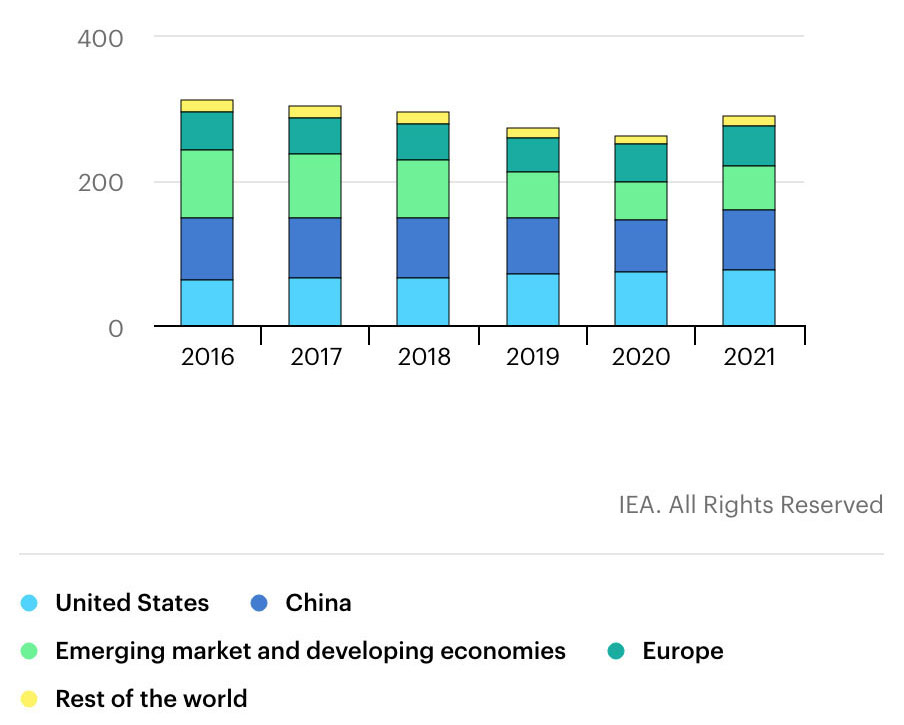
Electricity grid investments are expected to reach USD 290 billion in 2021, recovering from 2020 and even surpassing the 2019 level of USD 270 billion. Sustaining the falling trend of the previous four years, most of the 2020 decline stemmed from lower investments in China and several emerging markets and developing economies (EMDEs), which more than outweighed increases in the United States and Europe. However, the considerable expansion plans expected for 2021 are likely to reverse this trend.
In Europe, grid expansion plans for 2021-2030 provide the foundation for increased investment, supported by economic recovery schemes. While the European Commission’s 2030 climate ambition plan released in September 2020 foresees annual grid investments of USD 70 billion during 2021-2030 (more than double 2011-2020 spending), investments are set to be even higher owing to its July 2021 Fit for 55 plan, which aims for emissions in 2030 to be 55% lower than in 1990.
Check out our SmartWorlder section to read more about smart technologies.

